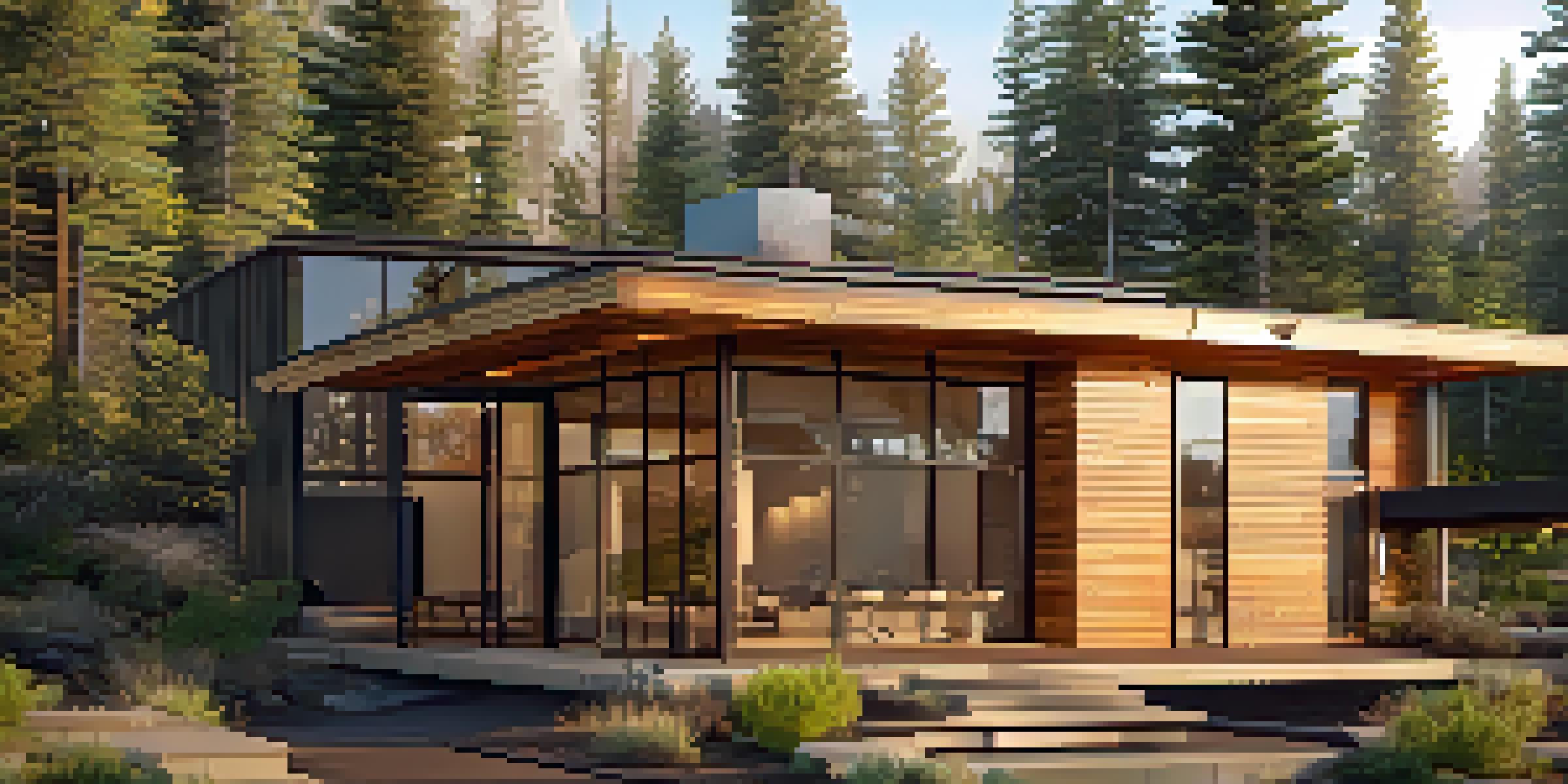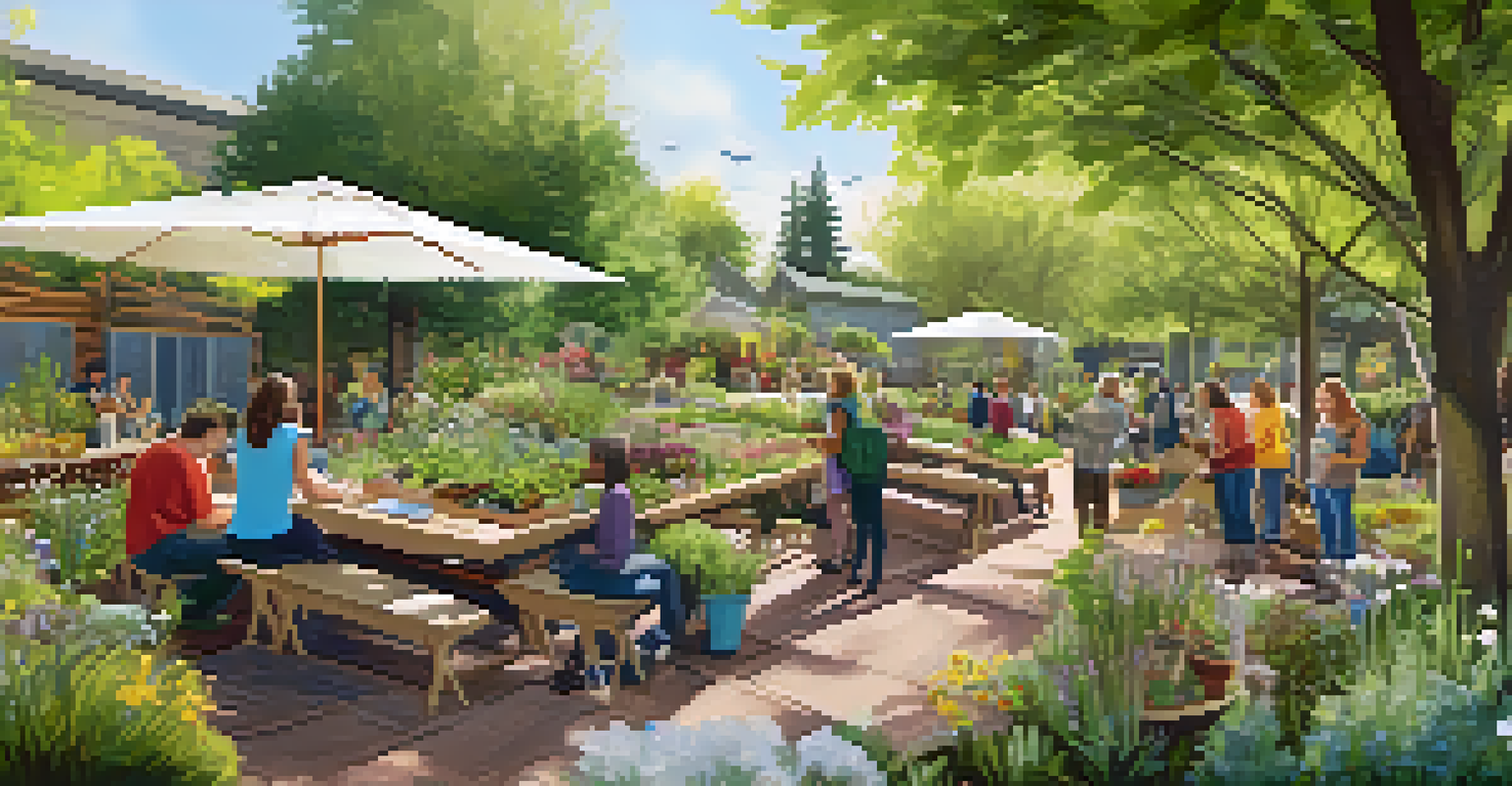Oregon's Eco-Friendly Building Practices: A Sustainable Future

The Importance of Sustainable Building in Oregon
Sustainable building practices are crucial for Oregon, a state renowned for its natural beauty and commitment to the environment. These practices not only reduce the ecological footprint of construction but also promote healthier living spaces for residents. By embracing sustainability, Oregon is paving the way for a future that balances development with environmental stewardship.
Sustainability is no longer about doing less harm. It's about doing more good.
In recent years, the state has witnessed an increased demand for eco-friendly structures, reflecting a growing awareness of climate change and resource conservation. This shift is not just about using green materials; it's about integrating innovative designs that minimize energy consumption and enhance efficiency. The result? Buildings that are not only functional but also harmoniously blend with the surrounding landscape.
Moreover, Oregon's sustainable building initiatives contribute to local economies by creating jobs in green construction and promoting the use of local materials. As more builders adopt these practices, the state sets a precedent for others to follow, proving that economic growth and environmental responsibility can go hand in hand.
Key Eco-Friendly Materials Used in Construction
One of the cornerstones of Oregon's eco-friendly building practices is the use of sustainable materials. From reclaimed wood to bamboo, builders are opting for resources that are not only renewable but also have a lower environmental impact. For instance, bamboo grows rapidly and can be harvested without causing long-term damage to its ecosystem, making it an excellent choice for flooring and cabinetry.

Another popular material is recycled steel, which is often used in structural frameworks. Utilizing recycled steel not only reduces waste but also cuts down on the energy required to produce new steel, showcasing a commitment to circular economy principles. This approach is a win-win, as it supports sustainability while ensuring durability and strength.
Sustainable Building Boosts Economy
Oregon's eco-friendly building initiatives create local jobs while promoting environmental responsibility.
Additionally, Oregon builders are increasingly incorporating insulating materials made from natural fibers, such as sheep's wool or hemp. These materials provide excellent thermal performance, reducing energy costs and enhancing indoor air quality. By choosing eco-friendly materials, builders are making significant strides towards a more sustainable future.
Energy-Efficient Building Designs in Oregon
Energy efficiency is at the forefront of Oregon’s sustainable building designs. Architects and builders are employing strategies like passive solar design, which maximizes natural light and heat, significantly reducing reliance on artificial heating and cooling systems. This approach not only minimizes energy consumption but also enhances the comfort of living spaces.
The greatest threat to our planet is the belief that someone else will save it.
Another innovative design practice is the use of green roofs, which provide insulation and reduce heat absorption in urban areas. These roofs serve as a habitat for local wildlife and help manage stormwater runoff, contributing to the overall health of the environment. By integrating nature into building designs, Oregon is setting a standard for urban sustainability.
Furthermore, many new constructions are equipped with smart technology that monitors energy usage and optimizes consumption. From smart thermostats to solar panels, these advancements not only lower utility bills but also empower residents to make environmentally conscious choices. The result is a community that thrives on efficiency and sustainability.
Incorporating Renewable Energy Sources
Oregon is leading the way in incorporating renewable energy sources into its building practices. Solar panels are becoming a common sight on rooftops, harnessing the abundant sunlight the state receives. This commitment to solar energy not only reduces reliance on fossil fuels but also allows homeowners to generate their own electricity, fostering energy independence.
Wind energy is another renewable resource that Oregon is utilizing effectively. Many new residential and commercial buildings are designed to operate in conjunction with nearby wind farms, contributing to a cleaner energy grid. By investing in renewable energy, Oregon is taking significant steps towards reducing greenhouse gas emissions and combating climate change.
Innovative Materials Enhance Sustainability
Builders in Oregon are increasingly using renewable and recycled materials, such as bamboo and recycled steel, to minimize environmental impact.
Additionally, the state encourages the use of geothermal systems, which tap into the Earth’s natural heat for heating and cooling. These systems are not only energy-efficient but also reduce operating costs for homeowners. By diversifying energy sources, Oregon is building a resilient infrastructure that supports a sustainable future.
The Role of Local Governments in Sustainability
Local governments in Oregon play a pivotal role in promoting eco-friendly building practices through incentives and regulations. Many cities offer tax credits for energy-efficient upgrades or rebates for installing renewable energy systems. These initiatives encourage homeowners and builders to invest in sustainable options, making green building more financially viable.
Furthermore, zoning regulations in many Oregon towns are increasingly accommodating sustainable development. By allowing for mixed-use spaces and higher density construction, local governments are fostering communities that reduce the need for long commutes and enhance walkability. This creates vibrant neighborhoods that prioritize sustainability and quality of life.
By collaborating with builders, architects, and community members, local governments are shaping policies that reflect a commitment to environmental stewardship. This collective effort ensures that the movement towards sustainable building practices is not just a trend but a long-term strategy for the state’s future.
Community Engagement in Eco-Friendly Initiatives
Community engagement is essential for the success of eco-friendly building initiatives in Oregon. Many local organizations host workshops and seminars aimed at educating residents about sustainable practices, from energy efficiency to waste reduction. These events empower individuals to make informed decisions about their homes and lifestyles, fostering a culture of sustainability.
Additionally, community-led projects, such as urban gardens and green building showcases, bring residents together to learn and share ideas. These initiatives not only beautify neighborhoods but also create a sense of belonging and shared responsibility towards the environment. When communities work together, they amplify the impact of their sustainability efforts.
Community Engagement Drives Change
Active participation from residents in sustainability initiatives fosters a culture of eco-consciousness and enhances local development.
Moreover, residents are encouraged to voice their opinions on local building projects, ensuring that development aligns with community values. This participatory approach not only enhances transparency but also builds trust between residents and developers. In Oregon, a collaborative spirit is driving the transition towards a more sustainable future.
Challenges Facing Sustainable Building Practices
Despite Oregon's commitment to eco-friendly building practices, challenges still exist. One significant hurdle is the higher upfront costs associated with sustainable materials and technologies. While these investments often pay off in the long run through energy savings, the initial expense can deter some builders and homeowners from making the switch.
Additionally, there can be a lack of awareness or understanding about sustainable practices among the general public. Many people may not be familiar with the benefits of green building or how to implement these practices in their own homes. Ongoing education and outreach are crucial to overcoming this barrier and encouraging wider adoption of eco-friendly solutions.

Finally, as urban areas continue to grow, finding the balance between development and preservation of natural spaces presents a challenge. While building sustainably is important, it's equally vital to protect Oregon's unique ecosystems. Collaboration between developers, environmental organizations, and local governments will be key to addressing these challenges and ensuring a sustainable future.